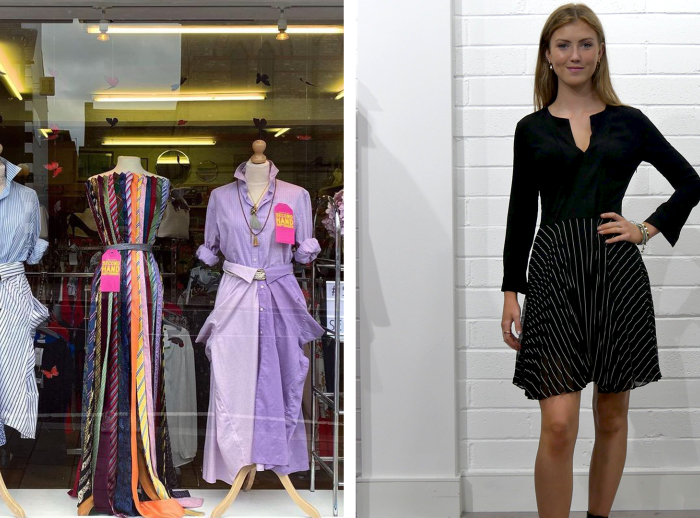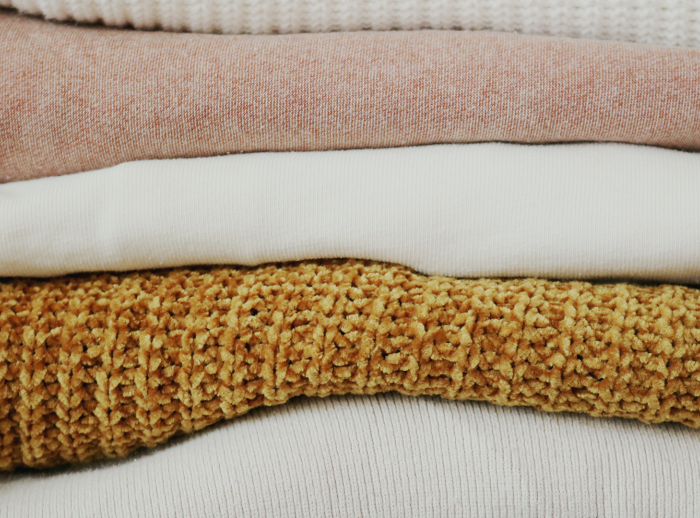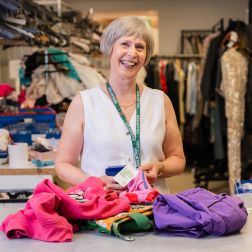- 5 mins read time
- Published: 1st August 2021
Sienna Miller is encouraging you to take part in Oxfam’s Second Hand September

Millions of items of clothing end up in Irish landfills every year. Throwaway fashion is putting increasing pressure on our planet and its people.
Sienna Miller is encouraging you to take part in Oxfam’s Second Hand September.
If we all make small changes, we can make a difference. - Sienna
When shopping with Fashion Relief or in Oxfam shops, there are gems to be found. The appeal of an original pieces that no one else has, interesting clothes with a twist, it all awaits you!
There are a few questions that every vintage shopper has when trawling through rails of clothes.
Will it fit, will I wear it, and will it last forever?

Shopping vintage and pre-loved can be an amazing and more sustainable approach to fashion, however there are a few things to keep in mind to shop as mindfully as possible.
Know what you need and what suits you.
Being clear about what items are missing from your wardrobe and knowing what looks good on you is key to being successful when shopping for vintage.2. Size it right.
Sizing and silhouettes have changed over the years, so it is important to try it on or have a tape measure handy.3. Don’t buy just because it’s a ‘gem’ or a ‘good deal’.
It’s only worth buying if it’s a piece you’ll wear and create memories in. Follow Livia Firth’s 30 Wear Challenge and ask yourself ‘will I wear this 30 times?’, this will force you to pause before buying. If the answer is not 100% yes, then put it back.4. Know your fabrics.
This one obviously takes time, but if you pay close attention to care labels and garment composition, you will eventually learn to recognise a fabric by touch intuitively. This is a great advantage because it means you’ll be able to get premium items for a lower price. A silk dress will be much cheaper if it's missing a composition label clearly stating that it's pure silk.And if all else fails – if you are not quite sure and it’s a bargain, go ahead and buy it anyway! After all it’s for a good cause. Have a constantly rotating cast-off bag at home. If you find that you do not wear something, you can always donate it back to the store for someone else to love. According to WRAP, by extending the life of our clothes by 9 months of active use, we can reduce their carbon, water, and waste footprints by 20-30%.
To make your special pieces last, it’s important to care for them properly.

1. Fabrics First
If you want to clean your vintage finds and escape sky-high dry-cleaning bills (not to mention avoiding the harsh chemicals), you should learn how to clean and store them properly. Cotton and synthetics are hardy fabrics and can be machine washed. Silk and satin are usually labelled as dry clean only but can usually be hand-washed in cool water. Sweaters will be good as new if you dry them flat on a towel as opposed to hanging them up (the weight of the water in them will stretch them beyond recognition). Speaking of stretched-out jumpers, never ever hang a jumper up on a hanger, as that’s a sure-fire way to stretch out the shoulders and ruin it.
2. Which wash?
When in doubt, and with vintage garments, it is always best to handwash. When doing your laundry, it’s also important to wash right; with a suitable detergent, technique, and temperature – treating the textiles the way they deserve. Clothes don’t need to be washed after every wear. 20% of the environmental impact of your clothes is generated when you wear and wash them. Air or steam clean them between wears and spot clean when needed, not only will you be helping the environment, but you’ll also help preserve your clothes for longer.
3. Store safe
Good storage is essential to preventing damage. Most damage comes from environmental conditions – sunlight, humidity, and pests. Use natural repellents like lavender pouches and cedarwood balls in your wardrobe and drawers to protect your garments.
4. Repair and Re-wear
Scruffs and scratches are par for the course with wear. Don’t write off damaged goods, you can extend their life by enlisting help in restoration services and repairs. When it comes to leather, apply a nourishing cream to your jackets, bags, and shoes to increase longevity. Enlist the help of an alternations pro who can ensure the durability of your clothes – repairs or restyling to suit your current lifestyle. Consult a tailor for ideas on fixing or upcycling. Or if you’re nifty with a needle, do it yourself.
And remember by shopping and donating with Oxfam, you’ll not only be helping to combat climate change, the money you help to raise will support people facing poverty around the world.




